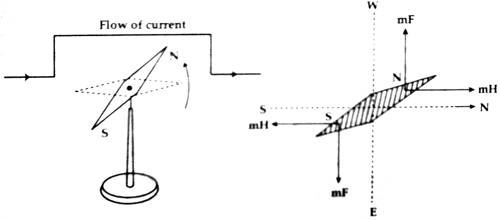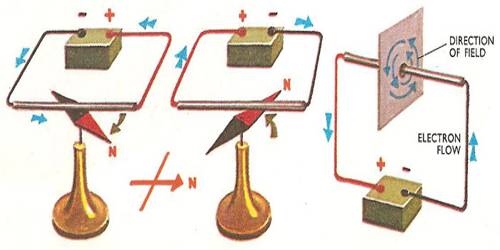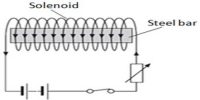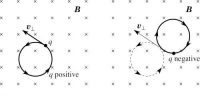Oersted’s idea about the Magnetic field
The branch of physics that deals with the magnetic effect of current are called electromagnetism. In 1828, H. C. Oersted, a physicist of Denmark suddenly discovered that magnetic field is produced around a current carrying wire. He showed that a magnetic needle gets deflected near a wire when current is allowed to flow through the wire. This phenomenon can be described in the following experiments. Since scientist Oersted first performed this experiment, hence it is named as Oersted’s experiment.
In this experiment, there is a freely movable magnetic needle [Fig. (a)]. Slightly above it, a conducting wire is placed parallel to it. If the current is passed through the conductor, it will be seen that the magnetic needle is getting displaced from the central position and tends to align itself parallel to the wire. This happens due to combined effects of geomagnetic field and the magnetic field created by the flow of current [Fig. (b)]

If the flow of current stops, the magnetic needle returns to its original position. Again, if the strength of current increases the deflection of the needle also increases. Not only this, if the direction of current is reversed, the direction of deflection of the needle also reverses. The following conclusions can be drawn from the Oersted’s experiment:
- When current flows through a conductor magnetic field is produced around it.
- The magnitude of the magnetic field depends on the strength of the current.
- The direction of the magnetic field depends on the direction of the flow of current.
- A magnetic field exists as long as the flow of current exists in the wire.
















